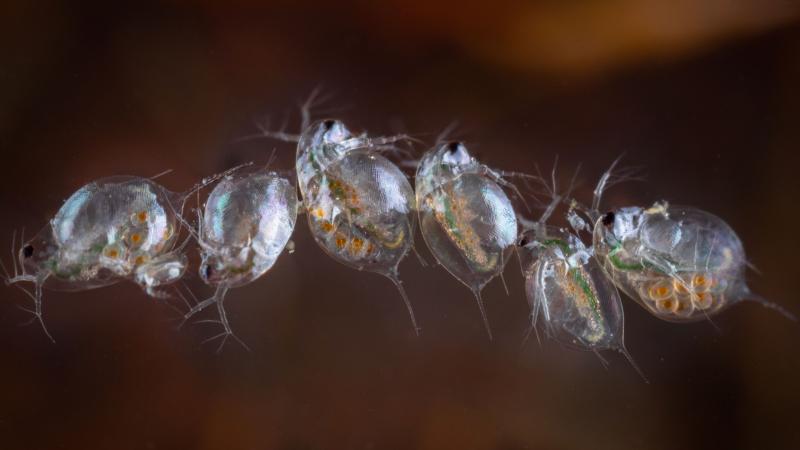
Some aspects of ecological research are timeless. However, new approaches are helping to overcome increasing challenges. The photo from 1959 shows the ZIMET-Neuglobsow, Laboratory for Microbiology. | Photo: IGB
The search for generalizable mechanisms and principles in ecology has always required a continuous cycle of experimentation, observation and theorizing. This is particularly necessary in order to map the diversity and complexity of relationships between organisms and environment. “A major challenge for modern ecology is to derive predictions from experiments – especially in the face of multiple stressors”, said Dr Lynn Govaert, IGB researcher and author of the study.
In their publication, the scientists address five key challenges that experimental researchers must overcome to improve the understanding of ecological responses to future environmental change: 1) embracing multidimensional ecological experiments, 2) moving beyond classical model organisms, 3) including environmental variability, 4) integrating across disciplinary boundaries and 5) using novel technologies.
Multidimensional ecology: investigating multiple stressors while avoiding ‘combinatorial explosion’
Historically, experimental studies have focussed on testing single-stressor effects on individuals, single populations and across limited spatial and temporal scales. There is, however, a growing appreciation of the need for multi-factorial ecological experiments. This is a non-trivial task. At the heart of the issue is overcoming the ‘combinatorial explosion’ of treatment levels when the interactions between multiple factors are being tested. "Combinatorial explosion refers to the fact that the number of combinations increases exponentially with every additional experimental treatment, as the number of unique sets of environmental conditions that can be created from a fixed number of factors increases exponentially with the number of factors used. Some solutions have been suggested to deal with this. Where two primary stressors can be identified, for example, one promising approach is the use of response surfaces. These surfaces build on the classic one-dimensional response curves”, explained Lynn Govaert.
Model organisms: pros and cons
The advantage of working with model species is that well-developed and robust experimental methodologies are available, making it easier to examine the effects of genetic diversity within populations. However, model species may be poor proxies for natural communities and obscure how species diversity at various levels shapes the ecological effects of global change. “We are not the first to suggest there is a need for an expanded set of model organisms. In aquatic systems, non-model organisms like diatoms, ciliates, anemone, axolotl and killifish provide opportunities to study key biological questions”, said Lynn Govaert.
Including natural environmental fluctuations
In experiments, natural environmental variability is often not taken into account and an average value is used instead, for example. "There are obvious technical reasons why environmental variability is not a common aspect of laboratory experiments, but more cost-effective approaches are becoming common, especially for factors like temperature. As more experimental ecologists begin to consider the effects of environmental variability, we encourage them to explicitly consider the magnitude and frequency of fluctuations, as well as the predictability of variation to truly drill down into the mechanistic basis for the effects of variability on ecological dynamics", said Lynn Govaert.
Overcoming barriers
By this aspect, the authors actually mean all facets of barriers: Artificial divisions between research disciplines, research subjects, stakeholder groups but also between participants in experimental research. Lynn Govaert said: "We limit our research when we restrict the breadth of perspectives. Networks of ecological experiments and training programs have the potential to bring scientists together, enable knowledge transfer and expansion of scientific infrastructure, and promote holistic approaches for addressing the ecological consequences of environmental change."
Technology to the rescue?
The authors present a range of new technologies, including ‘-Omics’, the automatic generation and analysis of data, and remote sensing. They discuss the profound impact these technologies have on research. “While technological advancement can increase the scope, scale, and depth of insights gleaned from data, we emphasize that these advancements must be built on the foundation of experimental work. There is no replacement for a well-thought out hypothesis and an appropriate experimental design. These elements should still constitute a fundamental component of any young ecologist’s training", said Lynn Govaert.
These are just a few of the many potential approaches to building on the legacy of experimental ecology – other experimental ecologists will undoubtedly have their own ideas about the best way forward. The authors hope that this perspective has stimulated reflection about the aspects of reality and feasibility that can be best incorporated into experimental work to improve predictions about the response of aquatic systems to global change.






